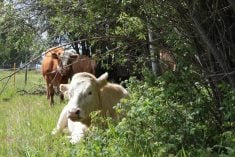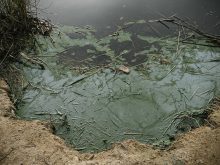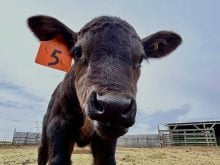Having been both a licensed veterinary practitioner and worked in the pharmaceutical industry for several years, I have seen a few things about how the product-licensing process affects the production animal industry in Canada.
While every situation is unique, the process can indirectly affect cost of production in some cases, while in others access is blocked, or at least delayed, compared to many other countries. The process has potential for production losses or animal death. It is important to keep bringing this to the forefront by communicating with the heads of the various production animal organizations.
Read Also

Gentle treatments for pain in the neck
Heading toward year-end, people unknowingly tense up against the cold and busyness, causing neck pain that can often be treated with appropriate support and gentle mobility, athletic therapist Kathlyn Hossack says.
There is no doubt the licensing process of products such as pharmaceuticals or insecticides needs to be cautious to protect safety of the food chain. But other countries combine forces or harmonize licensing, especially when there is a lot of trading between them. I believe Australia and New Zealand have a harmonized process already.
Canada’s government arm responsible for product licensing is called the Veterinary Drug Directorate (VDD), part of Health Canada’s Health Products and Food Branch.
Canadian Animal Health Institute (CAHI) aims to work closely with VDD to facilitate the licensing process. CAHI is made up of representatives of most of the major pharmaceutical companies as well as the various pharmaceutical distribution groups.
Delays cost money
It all comes down to economics. If it takes companies too long or costs too much to get new products through the approval system, they may not bother. Because Canada does not have a large population of production animals compared to many countries, it may not be worthwhile getting some products licensed — there may be no return on investment.
The VDD does allow veterinarians to bring in products under an Emergency Drug Release. This means a product is available elsewhere and can be used if there is a justified need in a particular herd or region. A good example is dairy cattle affected by Clostridium Perfringens A. That disease is covered in a very specific Clos Perf A vaccine or a multivalent vaccine that has Perfringens A in it as well as the other common clostridial diseases such as blackleg.
Even generics (meaning copycat products) need fairly rigorous testing. The product itself isn’t new, but may just be a different strength than one already registered. A lower or higher strength may already have been passed but strengths in the middle still need extensive testing. A good example is growth implants. Companies have both extremes tested, yet if they want to fine-tune their strategies to provide a growth implant in the middle, the same rigorous testing (with associated costs) needs to happen, so the companies simply don’t bother.
Withdrawal time can be another licensing issue. This is the recommended time between the last drug treatment and the slaughter of the animal or sale of milk, eggs or honey. It’s the time required for the drug residue to be reduced to safe levels before the food produced by that animal may be eaten. These times can be vastly different on the same product, depending on which side of the U.S./ Canada border you live.
This is because mathematical calculations are done on drug withdrawal based on how much meat they think we Canadians eat compared to Americans. This is why some withdrawals are almost double in Canada compared to the U.S. Yet meat is exported both ways under these two fairly different meat-withdrawal systems.
Insecticides a concern
I have been told that the time taken for applications for veterinary insecticides just to be looked at after submission is well over a year — kind of like you taking a year to open your important mail. This in my mind is unacceptable, and with insecticide categories being taken away and global warming causing a definite migration of ticks north, there may come a time when we have nothing effective because research has not been encouraged in this area.
There are management practices that can help reduce internal and external parasites and there are testing procedures we can do to avoid over-treatment. Genetic research to develop parasite resistance in animals is an expanding field, but there still needs to be treatment on occasion. Canada needs to have access to effective products.
These are usually proven safe and effective by the company that makes them and are already being used in other countries. It sometimes astonishes me as to what products are available elsewhere already.
Just as how many companies in different countries came together to develop COVID vaccines to protect humans, the same should be considered for many animal vaccines or treatments. It is already being done with things such as foot-and-mouth disease and vaccine banks, but more is needed.
Again, we need to keep mentioning to local, provincial and federal politicians the importance of Canadian producers having timely access to new products whether biologicals (vaccines), pharmaceuticals (antibiotics) or insecticides. There have been increasing licensing problems in all these areas in the last few years and we all need to work on making it better for you, the primary producers.















